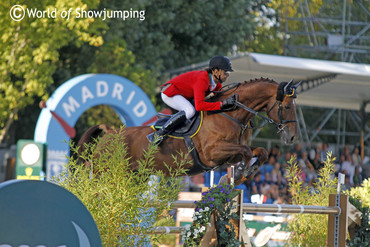
Natale Chiaudani at the Europeans on Almero 12 - a horse he really believes in. Photos (c) Jenny Abrahamsson.
Natale Chiaudani is certainly a refreshing breeze; not only through his unique style with Ray Ban Aviators and glossy riding boots – WoSJ also discovers him to be a man who once painted horses instead of riding them, that loves fly fishing in addition to horses and who has clear opinions on the sport.
The first time Natale really caught our eye was during the Europeans at Windsor in 2009. The Italian rider was hard to miss on the lovely Seldana di Campalto – he produced the sole double clear of the team competition, which was a big contribution to Italy’s silver medal. This also caught the attention of the international showjumping community; a year after her performance at Windsor Seldana was sold to Abdullah Al Sharbatly who won the WEG silver medal on her in Kentucky.
Natale lives in Livorno – a city by the sea in Tuscany. Livorno was once a small fisherman village, and as Natale puts it; “I don’t come from a horse family; my family consists of fishermen”. This has for sure made Natale who he is today; not only a rider but also an eager fly fisher. “I try do some fly fishing every week,” Chiaudani tells us. “I love fishing – almost as much as I love horses. I’ve been on trips to New Zealand fishing; it’s amazing,” before he goes into details about fishing gear, goretex suits and how to catch and release a tuna – while we listen with fascination to this rider who apparently has other things to fall back on. “Oh, no,” he says – “if I had to live off fly fishing I would have to be a guide, and then I wouldn’t be able to catch anything myself,” he laughs.
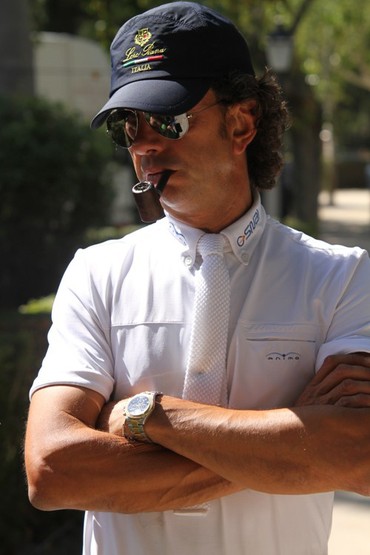
Natale Chiaudanin in Madrid - with his signature Aviator sunglasses.
With paint – that’s how Natale’s admiration for horses began. “I started to paint horses when I was three and did so up until I started to ride in my late teens. I also liked to watch horses on TV and read about them; I always had an interest for horses. My first time on the horse back felt quite natural; I trotted and galloped and three days later I jumped small fences,” Natale tells us of his late start compared to many other top riders. “I was actually supposed to go to an agricultural school and become a vet, but this was at the same time as I started to ride – and I decided right then that I wanted to become a professional rider instead,” he smiles.
So off he went; as soon as Natale had finished school he went into the military cavalry. “There I got my education from the famous Piero D’Inzeo [who has no less than six Olympic medals, a European gold and four wins in the Aachen Grand Prix – at this point in the conversation we learn our showjumping ABC from Natale]. In the military cavalry I did lots of different things; I played polo and rode steeplechases – I stopped with the latter after I broke my shoulder,” Natale laughs. “But it was a great experience!”
“At 21 I started my own business. I have trained with Nelson Pessoa, Albert Voorn, Franke Sloothaak and Michel Robert – to mention some of my tutors. My idol is probably Albert though; he has a great philosophy when it comes to riding. He’s also a great rider; it’s like music to your ears to see him jump. It doesn’t matter which horse he is on!”
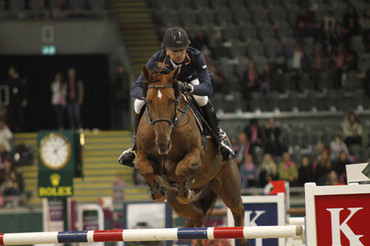
Natale Chiaudani in action in Oslo on Almero 12.
All of Natale’s trainers have made an impact on his own riding philosophy; “I usually build my session on a horse like this; first I trot for five minutes. My opinion is that the trot is not enough for the horse to get its back moving, the horse mostly moves it’s legs in trot. If you look at a horse in a field that starts to move, you will see the horse walks, then trots shortly before it switches to gallop. It’s more natural for a horse to gallop,” Natale explains. “The important thing for me when I ride is that the horse takes the bit correctly. I want my horses to go with the bit; not against it and not behind it. After my five minutes in trot I start galloping in a light seat; normally for about twelve minutes – this is important to get the condition of the horse right and to build muscles. Then I walk for two or three minutes,” the Italian rider explains.
“Then comes the important part;the horse’s fifteen minutes of full concentration. This is actually how long you will manage to keep the horse to focus. If I ride a hot horse, I continue working throughout the fifteen minutes. If it’s a colder type of horse I have some short walks in between,” he says. “If I jump; I don’t have the fifteen minutes of concentrated work first – then I spend those fifteen minutes on the exercises I want to jump,” Natale explains on how he works his horses. “When I jump, I always work my horses in dressage until the last stride. I let the horse be free over the jump.”
“This is my system. It may not bring a large numbers of victories quickly and the fast track to success that many younger riders today search for, but it certainly makes you win over a longer period of time,” Natale says. “I think it’s frustrating to look at some of the younger riders that only ride to win. The heads of their horses and ponies are everywhere, they ride in cross canter, and there is no rhythm! If you have a left gallop your horse should have its head a little to the left side – its’ not very hard,” Natale shakes his head after having watched some pony classes earlier in the day.
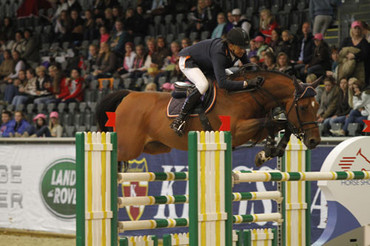
Natale has a clear riding philosophy and says; "I let the horse be free over the jump."
Natale also has some opinions on other perspectives of the sport and the topic of our conversation moves on to the different kinds of surfaces used at the shows. “If the horses could speak I think they would choose jumping on grass – they are born on it – but it’s difficult to get perfect grass, and that’s why we see it less and less. The sport moves more and more to the indoor arenas and the choice is obviously to use artificial surfaces. I prefer the oil-based surfaces; they are better for the horses as they are softer. The problem with the non-oil based surfaces is that they almost give too much grip – just listen to the difference when the horses move and jump on oil-based and non-oil based; when you hear a numb sound when the pole falls to the ground there is no reason to believe that the horse gets another sensation when landing – which can’t be good,” Natale explains. “Like in Madrid I found the surface to have a bit too much grip; I also think that caused many of the problems at the water jump – the horses did not want to stretch over it and land on the other side,” he continues. “Also some of the surfaces used are so white you almost need sunglasses for the horses too,” Chiaudani laughs.
“And as to the water jump; there are too many faults on the water these days – just look back at Madrid and count! I do not understand why it needs to be featured two times in the Nations Cups either; it’s a boring jump that is made too much out of. In my opinion it’s not necessary to jump it twice; one round should be enough,” Natale concludes.
Natale is definitely a breath of fresh air. Watch out for him on his new exciting ride Almero 12 that has impressed many; he might just blow you away!
Photos by Jenny Abrahamsson/Text by Jannicke Naustdal - copyright © worldofshowjumping.com 2011.







